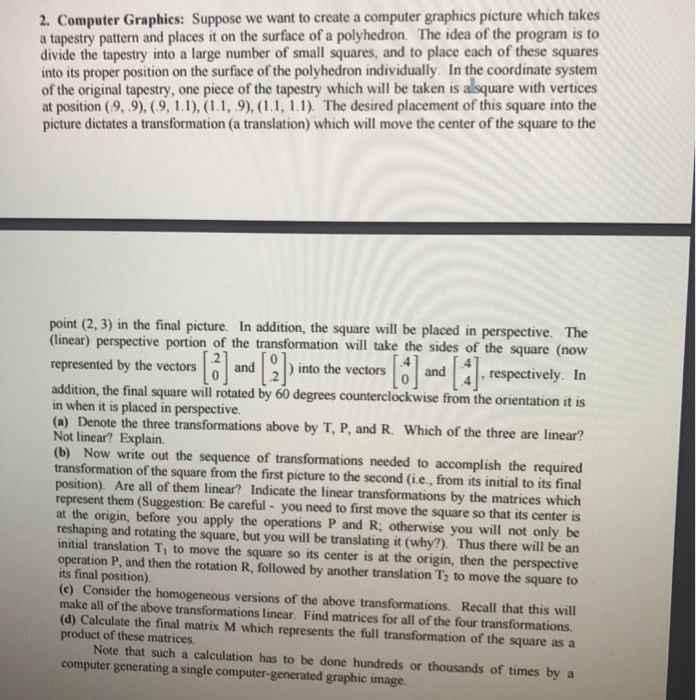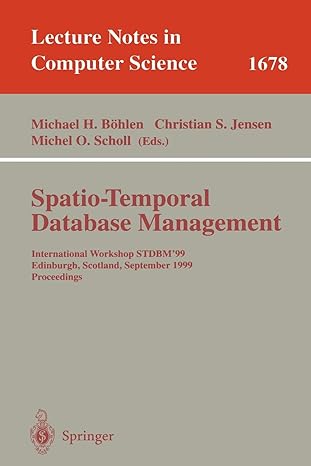Suppose we want to create a computer graphics picture which takes a tapestry pattern and places it on the surface of a polyhedron. The idea of the program is to divide the tapestry into a large number of small squares, and to place each of these squares into its proper position on the surface of the polyhedron individually. In the coordinate system of the original tapestry, one piece of the tapestry which will be taken is a square with vertices at position (9, .9), (9, 1.1), (1.1, 9), (1.1, 1.1) The desired placement of this square into the picture dictates a transformation (a translation) which will move the center of the square to the pion (2, 3) in the final picture. In addition, the square will be placed in perspective. The (linear) perspective portion of the transformation will take the sides of the square (now represented by the vectors [.2 0] and [0 .2]) into the vectors [.4 0] and [.4 .4] and [.4 .4] respectively. In addition, the final square will rotated by 60 degrees counterclockwise from the orientation it is in when it is placed in perspective. (a) Denote the three transformations above by T, P, and R. Which of the three are linear? Not linear? Explain. (b) Now write out the sequence of transformations needed to accomplish the required transformation of the square from the first picture to the second (i.e., from its initial to its final position). Are all of them linear? Indicate the linear transformations by the matrices which at the origin, before your apply the operations P and R; otherwise you will not only be reshaping and rotating the square, but you will be translating it (why?). Thus there will be an initial translation T_1 to move the square so its center is at the origin, then the perspective operation P, and then the rotation R, followed by another translation T_2 to move the square to its final position) (c) Consider the homogeneous versions of the above transformations. Recall that this will make all of the above transformations linear. Find matrices for all of the four transformations. (d) Calculate the final matrix M which represents the full transformation of the square as a product of these matrices. Note that such a calculation has to be done hundreds or thousands of times by a computer generating a single computer-generated graphic image







